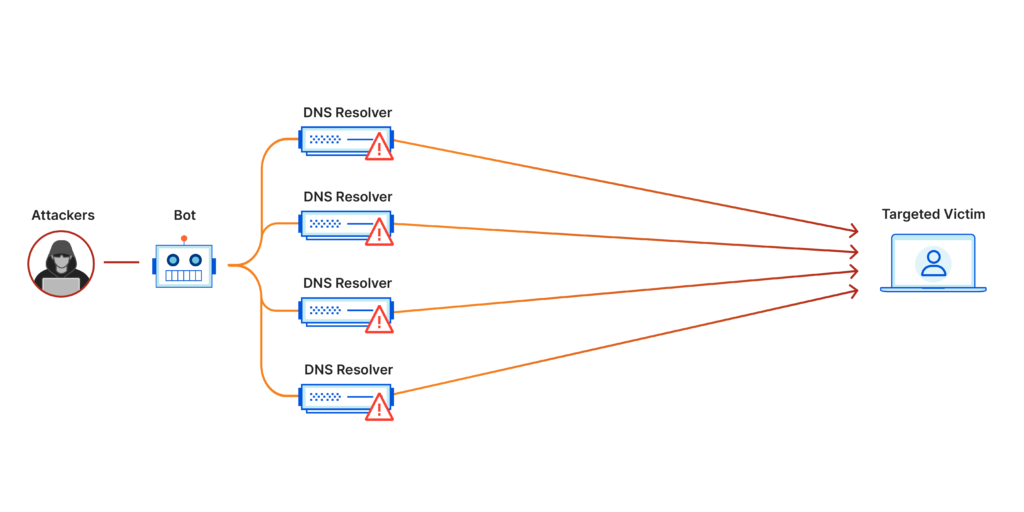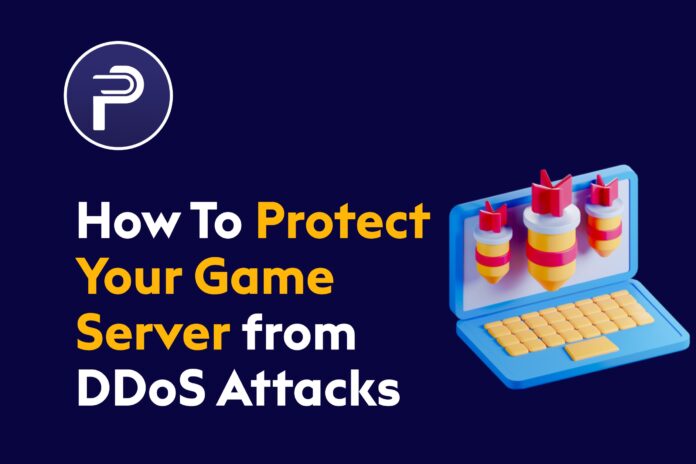Introduction
In recent years, gaming has surged in popularity, drawing more individuals to indulge in gaming sessions after work or during weekends. The landscape has evolved notably, with a substantial shift towards gaming on specialized servers. These servers, available for rent or creation by game administrators, companies, or players, allow the installation of various games. However, a pressing issue has risen: gaming servers have increasingly become prime targets for DDoS attacks. In this article, we delve into the reasons behind this trend and offer insights into safeguarding your server and gaming experiences from such attacks.
Must Read:Top 5 Recommended Steam Games To Buy With A Steam Gift Card
Why Gaming Servers Are A Prime DDos Target

Firstly DDoS is short for distributed denial of service.These servers are particularly vulnerable to malicious attacks primarily due to their high performance. Modern games demand substantial hardware resources to operate smoothly, especially when accommodating numerous players simultaneously, ranging from a few dozen to thousands. This heightened performance renders them attractive targets for viruses seeking to exploit their capabilities to swiftly spread through networks. Given that these servers are interconnected with other servers and users’ devices, there’s a risk of these viruses infiltrating additional systems.
In addition, gaming servers are prime targets for malicious actors seeking to deploy cryptocurrency mining trojans and malware. These threats can infiltrate either the server itself or any device connecting to it. Consequently, a single DDoS attack can result in the infection of hundreds or even thousands of devices. Furthermore, within the industry, there’s fierce competition. With competitive online gaming evolving into a billion-dollar industry, many companies vie for a larger player base on their servers. They recognize that organizing tournaments or events requires a sufficient player count, prompting them to hinder rival servers through DDoS attacks.
Set Yourself Up For Success
For gamers well-versed in server setup and equipped with the necessary knowledge, establishing a gaming server fortified against DDoS attacks is feasible. However, individuals lacking this expertise may find the task daunting. Rather than grappling with the complexities associated with implementing DDoS protection, opting to collaborate with specialized companies proves advantageous. These entities integrate game DDoS mitigation and protection measures into gaming servers to shield them from potential attacks. Additionally, they furnish users with a comprehensive control panel, offering real-time insights into server activities, along with round-the-clock access to proficient customer support teams for prompt issue resolution.
Protecting Your Server Using A Firewall
Should you opt for self-setup, your initial priority is configuring a firewall. By default, it should block all incoming traffic since DDoS attacks inundate your system with excessive data, crippling its functionality. During setup, it’s imperative to establish exceptions permitting access to essential ports and protocols for server login, SSH, and game connectivity (TCP/UDP). Strengthening these rules involves restricting access solely to specific IP addresses for login protocols and ports. However, ensure your IP address is static, not dynamic, to prevent access issues caused by IP changes. Dynamic IP addresses fluctuate, potentially locking you out of your account or server if changes occur after setting up these rules.
Use Rate Limiting To Protect Your Server From DDoS Attacks
The optimal approach is to safeguard your server using rate-limiting techniques. While a firewall offers protection against incoming requests, it still leaves vulnerabilities that malicious actors can exploit. Rate limiting addresses this concern effectively.
As its name implies, rate limiting restricts the number of requests the server can handle within a specified timeframe. This capability makes it a powerful tool against DDoS attacks. Beyond merely capping the request count, rate limiting can also regulate the time frame within which requests are processed. This time window can span from as short as one second to extending over a day. During a DDoS onslaught, requests may flood in at rapid intervals, overwhelming the server. By limiting the time window, some of these requests are thwarted, mitigating their impact on the server’s performance.
Applying Rate Limiting On Different Levels
Rate limiting offers versatility by allowing implementation at various levels. Within the application’s code, built-in rate limiting functionality monitors incoming requests and enforces limits according to predefined rules.
Moreover, it can be integrated at the server level. Server software such as Apache and Nginx provides tools for applying rate limiting based on specific criteria, including headers, URLs, and IP addresses. These rules enable the banning of IP addresses exceeding request thresholds, resulting in a 403 (forbidden) or similar error response.
If the game server utilizes APIs, rate limits can also be set for these endpoints. Additionally, rate limiting can be applied at the reverse proxy level. Many game servers employ a reverse proxy positioned in front of the application server, acting as a gatekeeper to filter and manage incoming traffic.
Strengthen Your Server Configuration
Your firewall and rate-limiting configurations provide a solid defense against minor attacks, but further hardening measures are necessary for more severe threats. This entails closing unused ports, deactivating unnecessary services, and ensuring secure connections and communications.
Additionally, enabling automatic server updates is crucial despite these security measures. This ensures the operating system and server software remain current with the latest security patches.
Bear in mind that malicious actors continuously monitor changelogs to identify vulnerabilities patched by developers, particularly in older software and operating system versions.
Conclusion
The strategies outlined above can greatly minimize the impact of DDoS attacks. Nonetheless, maintaining vigilance is essential to detect and address any emerging issues, as complete risk elimination is difficult given the constantly evolving landscape of cyber threats. Collaborating with cybersecurity professionals is advisable to explore further methods of ensuring the safety of your gaming server and its users.

